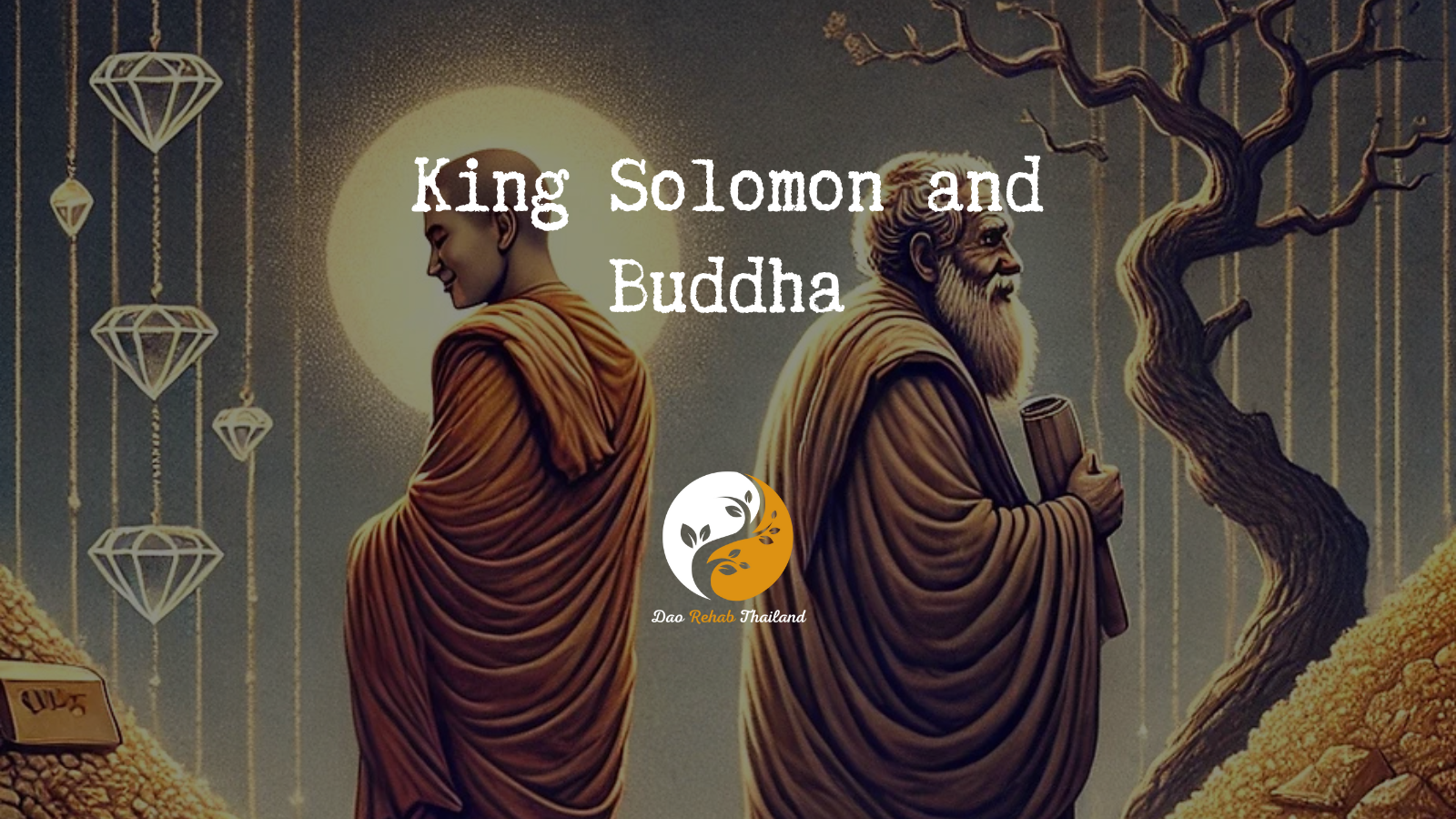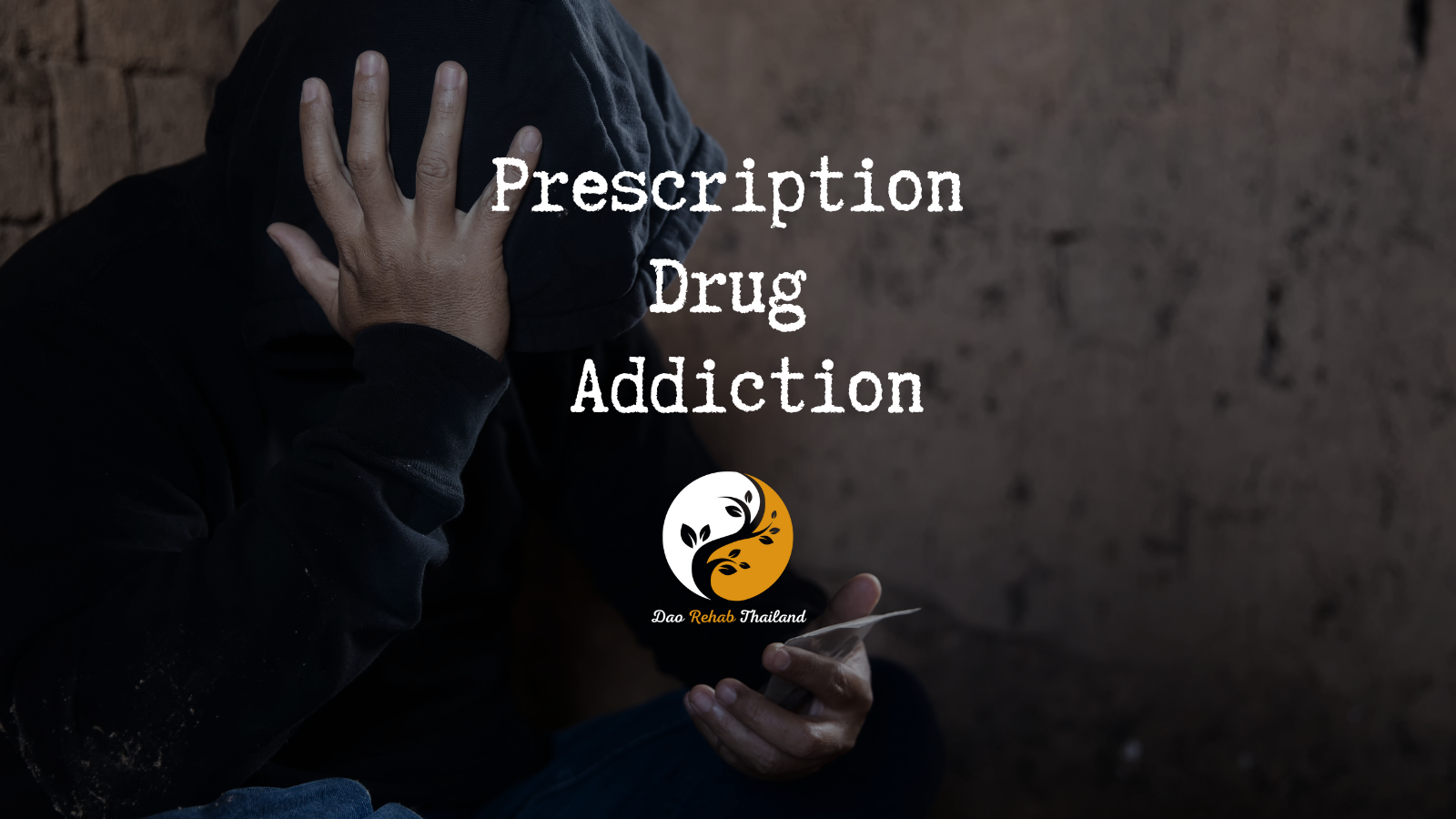
King Solomon and Buddha
King Solomon and
Buddha
“Turning the impossible into possible”

"Detox from Drugs at a Luxury Holistic Center in Thailand and Israel"

King Solomon Kohelet and Buddha
kohelet is one of the books of the Bible, belonging to the group of books called “Written” in the Bible. The book is considered one of the Wisdom Books, along with the Book of Proverbs and the Book of Job. kohelet was probably written in the period after the destruction of the First Temple and the Babylonian exile, although there is disagreement among scholars regarding the exact time of its writing. In this article, we will attempt to examine how the Buddha’s approach to the Four Noble Truths connects to Ecclesiastes and his approach to life.
"Holistic Center for Trauma, Addiction, and Mental Imbalance Treatment in Thailand"
“Come to the beginning of your journey to freedom from addiction to alcohol, drugs, and pills, and rediscover your life within the serene embrace of DaoTherapy Rehab in Thailand—where holistic healing meets empowering recovery.”
DaoTherapy Holistic Rehab
Key Elements of Drugs Detox:
Medical Supervision: Drugs detox must be conducted under medical supervision, as the body may experience withdrawal symptoms. These can include nausea, anxiety, muscle aches, and insomnia. A medical team will monitor and manage these symptoms to ensure the patient’s safety and comfort.
Holistic Therapies:
Holistic Therapies: Many detox programs incorporate holistic therapies such as mindfulness, yoga, and meditation to help individuals cope with stress and anxiety during the detox process. These therapies support the mind-body connection and contribute to overall recovery.
Tapering Process
Tapering Process: Drugs detox often involves a gradual tapering of the drug to reduce withdrawal severity. Doctors will slowly decrease the dosage over time to allow the body to adjust to lower levels of the substance.
Psychological Support:
Psychological Support: Like any addiction recovery process, detox from Drugs includes psychological support. This can involve counseling, therapy, or support groups to address the mental and emotional aspects of addiction.
Post-Detox Treatment:
Post-Detox Treatment: After completing detox, continuing treatment is crucial to prevent relapse. This often includes participation in ongoing therapy, group support, and the development of new coping strategies to maintain sobriety.
Contents of the Book of kohelet:
Author: Jewish tradition identifies King Solomon as the author of the book, hence the nickname “Kohelat” given to him, which means “the king who teaches the congregation.” The author presents himself as a son of David, king in Jerusalem.
2. Main theme: The book focuses on reflections on the meaning of life and human existence. The author describes the search for the truth and true meaning of life through his personal experiences, and comes to the conclusion that all is “vanity of vanities” – that is, everything is transient and meaningless.
3. Main motifs:
Vanity of vanities: The author speaks of the emptiness and meaninglessness of life, of wealth, work, and wisdom.
The circularity of life: Life is described as an endless cycle of birth and death, sunrise and sunset, and the author describes the feeling that there is nothing new under the sun.
Time and coincidence: The author notes the influence of time and coincidence on life, and emphasizes that man does not have complete control over his destiny.
The Pleasures of Life: Alongside the sense of vanity, the author points out the value of finding pleasures in simple life, such as eating, drinking, and being happy.
4. Style: The book is written in the form of personal reflections and thoughts, sometimes poetically and sometimes in prose. It includes famous sentences and proverbs that have become part of the Hebrew language and culture.
Messages:
Ultimately, the author comes to the conclusion that man should live his life out of fear of God and keep His commandments, as this is man’s true role.
kohelet is considered one of the most complex and profound books in the Bible, and it provokes thought and discussion to this day.

contact us
Contact us with your questions
We would love to speak with you! Feel free to reach out with any questions.

get in touch
Schedule a free consultation
Schedule a free consultation with our team and let’s make things happen!
The Life of Buddha:
Buddha, also known as Siddhartha Gautama, was the founder of the Buddhist religion and one of the most influential figures in human history. The following is a summary of his life and teachings:
1. Birth and Family:
Siddhartha Gautama was born in the Shakya Kingdom, in what is now Nepal, around 563 BCE.
He was a prince and the son of King Suddhodana and Queen Maya. According to tradition, many prophecies predicted that he would grow up to be a great spiritual leader or king.
2. The Palace and Comfortable Life:
As a prince, Siddhartha was raised in a luxurious life in the palace and was protected from all forms of suffering and hardship in the outside world.
In his marriage, he had a wife named Yasudhara, and they had a son named Rahula.
3. The Four Sights:
At the age of 29, Siddhartha set out on a journey outside the palace. During his journeys, he saw four sights that changed his life: an old man, a sick man, a corpse, and a monk.
These sights made him question the meaning of life and suffering.
4. Awakening And the Search:
Siddhartha left the palace and his family, and set out on a spiritual journey to find the path to liberation from suffering.
He studied with various teachers and tried extreme ascetic practices, but discovered that they did not lead to enlightenment.
5. Enlightenment:
At the age of 35, after a long meditation under the Bodhi tree (a sacred fig tree), Siddhartha attained enlightenment and became the Buddha – “the Enlightened One”.
At his enlightenment, he discovered the Four Noble Truths and the Middle Way.
Buddha’s Teachings:
1. The Four Noble Truths:
The First Truth: The Existence of Suffering (Dukkha) – All life is suffering.
The Second Truth: The Origin of Suffering – Suffering arises from incessant craving and desires.
The Third Truth: The Ability to Cessation of Suffering – We can free ourselves from suffering by achieving Nirvana.
The Fourth Noble Truth: The path leading to the cessation of suffering – the Noble Eightfold Path, which includes right understanding, right intention, right speech, right action, right livelihood, right effort, right mindfulness, and right concentration.
2. The Middle Way:
The Buddha advocated the middle way, which avoids the extremes of self-gratification and extreme asceticism.
3. Reincarnation and Karma:
His teachings include the concept of reincarnation and karma, which shape our lives and destinies according to our actions.
The Buddha spent the rest of his life wandering throughout India, teaching his teachings and establishing a community of monks and nuns (the Sangha). His teachings spread and became one of the world’s largest and most influential religions, with millions of followers worldwide.
Similar characteristics between the insights presented by Ecclesiastes and the teachings of Buddha.
1. Observing life and suffering:
kohelet: Ecclesiastes describes life as meaningless, with feelings of futility and vanity in all areas – wealth, wisdom, work and pleasures.
Buddha: Buddha focuses on the Four Noble Truths, which begin with the understanding that all life involves suffering (dukkha), and the search for a way to be free from it.
2. Searching for meaning and insights into life:
kohelet: Describes the search for meaning in life through various experiences, and comes to the conclusion that everything is vanity and that there is nothing new under the sun.
Buddha: Buddha sought the truth about the nature of life and reached enlightenment, in which he discovered the Four Noble Truths and the path to liberation from suffering.
3. Reference to time and impermanence:
kohelet: Talks about the cyclical nature of life, that there is nothing new under the sun, and that everything passes and passes.
Buddha: Speaks of the impermanence (anicha) of all things in the world, everything is temporary and changing.
4. View of wealth and pleasures:
kohelet: Emphasizes the futility of the pursuit of wealth and pleasures, and points out that there is vanity in them too.
Buddha: Teaches that the desire for wealth and pleasures is a source of suffering, and that the middle way must be found between the extremes of asceticism and self-gratification.
5. The search for inner peace and tranquility:
kohelet: Ultimately suggests the observance of the commandments of God and the fear of Him as the path to a life of meaning.
Buddha: Teaches that the middle way and enlightenment are the paths to achieving Nirvana – inner peace and tranquility and freedom from suffering.
6. The insight that life is beyond what is visible:
kohelet: Encourages readers to think beyond momentary pleasures and seek the greater meaning.
Buddha: Encourages the understanding of the nature of things beyond human desires and suffering, and the search for enlightenment.
Both writings offer profound insights into the nature of life and human existence, each in its own way, and can be a source of inspiration for reflection on life and its meaning.
Contemplating life and suffering in the community and teachings of the Buddha
kohelet is a book in biblical wisdom literature that focuses on exploring the meaning of life and observing human nature and existence. The author, who is believed to be King Solomon, reflects on human life, his actions and feelings, and describes his search for meaning in a world full of suffering and vanity:
1. Vanity of vanities: kohelet repeatedly repeats the phrase “Vanity of vanities, said kohelet, all is vanity.” He speaks of the feeling of emptiness and meaninglessness in life, in wisdom, wealth and pleasures. All these things are fleeting and do not give true satisfaction.
2. The circularity of life: kohelet describes life as an endless cycle of events and things that repeat themselves, such as the cycles of day and night, birth and death. All things are in flux and there is nothing new under the sun.
3. Human suffering: kohelet describes the suffering that results from the search for material success and momentary pleasures, which always end in a feeling of emptiness and frustration. He observes human attempts to find meaning and satisfaction, and comes to The conclusion is that there is nothing that is permanent and truly satisfying.
4. Temporal Life: kohelet observation of life emphasizes its temporality and impermanence. Everything passes quickly and nothing lasts forever.
Buddha:
The Buddha focuses his teachings on suffering (dukkha) and the ways to be free from it, presenting the Noble Truths and the Middle Way as the path to liberation:
1. Suffering: The First Truth speaks of the existence of suffering in all aspects of life. Buddha states that all life involves suffering, which comes from emotions such as pain, dissatisfaction, and the changing feelings of pleasure and pain.
2. The Causes of Suffering: The Second Truth describes the origin of suffering as craving, desire, and grasping. This craving stems from the incessant desire for pleasures, wealth, and power, which leads to suffering when they are not achieved or are lost.
3. Freedom from suffering: The third truth states that one can be freed from suffering through the cessation of craving and passions, and reach Nirvana – a state of peace and complete freedom from suffering.
4. The Middle Way: The fourth truth describes the path to freedom from suffering, known as the Middle Way, which consists of eight steps (the Noble Eightfold Path) that lead to a balanced life free from the extremes of asceticism or self-gratification.
Comparison between kohelet and the Buddha:
Recognition of suffering and futility: Both characters observe the suffering and meaninglessness of life. kohelet sees everything as fleeting futility, while the Buddha recognizes suffering as a result of craving and grasping.
Circularity and impermanence: Both recognize that life is circular and temporary. kohelet describes the circularity of events, and the Buddha speaks of the impermanence (anicha) of all things.
The Search for Meaning: kohelet finds meaning in keeping God’s commandments and fearing Him, while the Buddha finds liberation from suffering through the Noble Path.
Both offer profound insights into the nature of life and human existence, but each reaches different conclusions about how to live a meaningful life.
Psychological Support:
Psychological Support: Like any addiction recovery process, detox from Subutex includes psychological support. This can involve counseling, therapy, or support groups to address the mental and emotional aspects of addiction.








